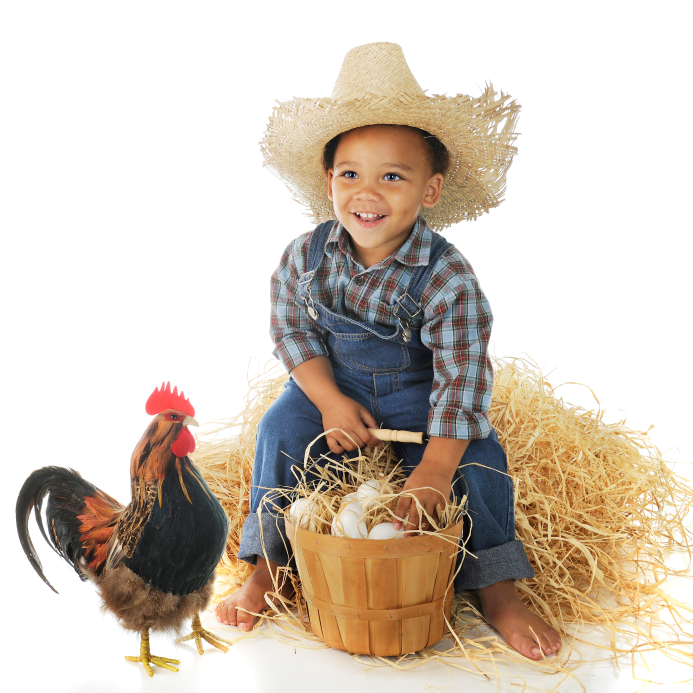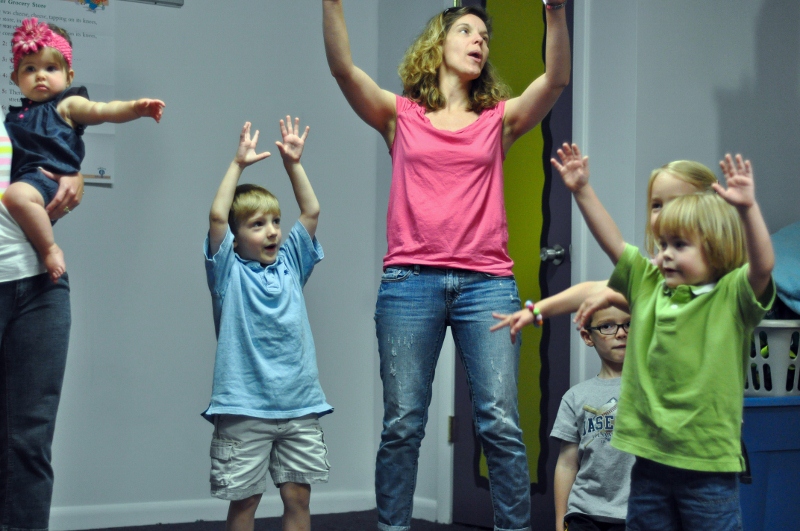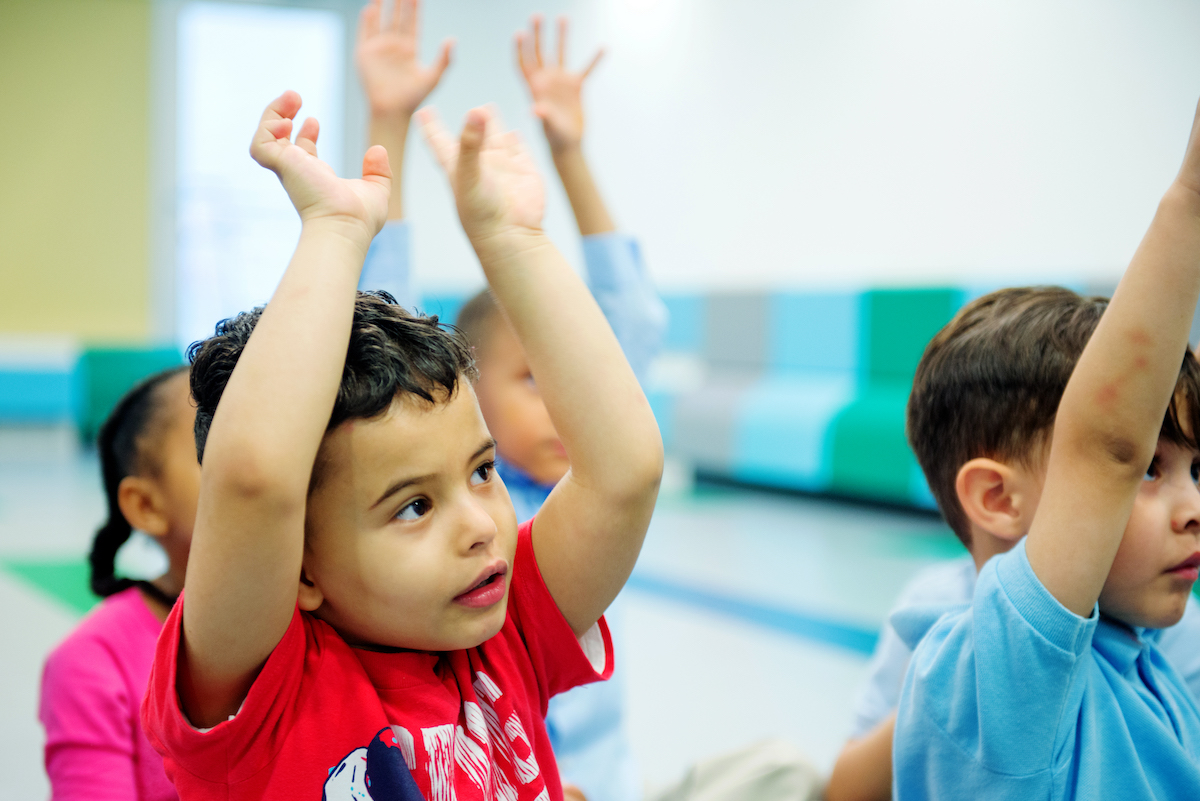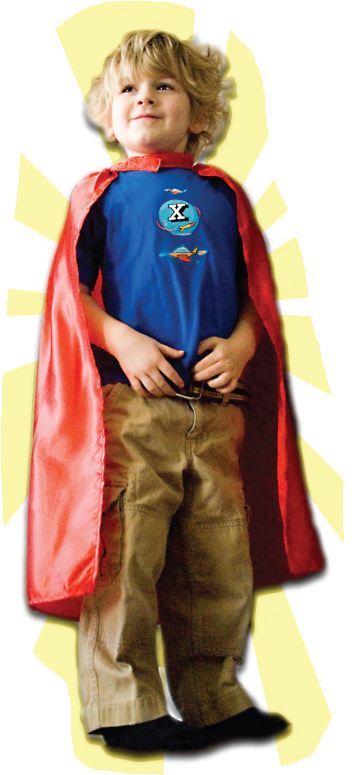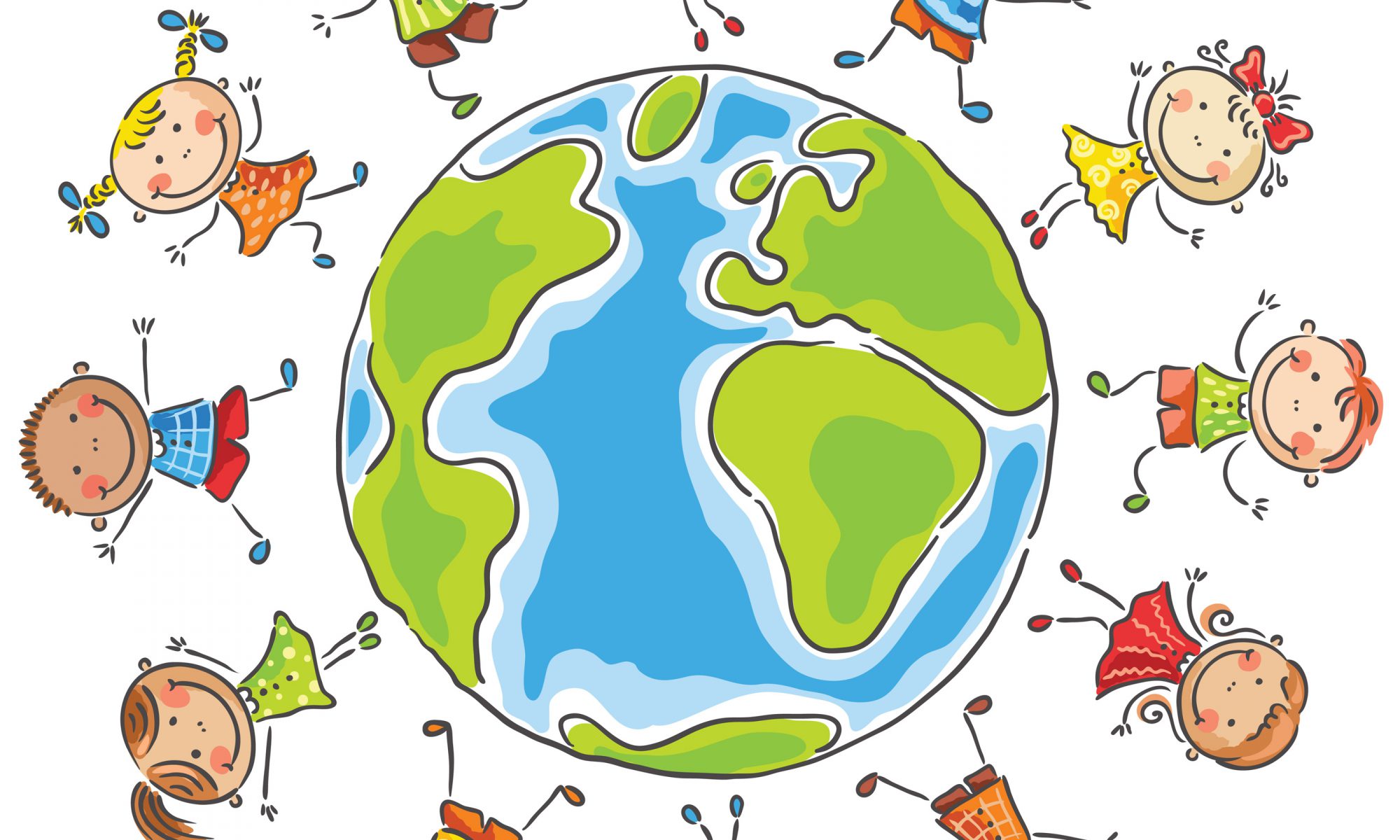 According to the authors of the book Ladders to Literacy, “…playing with the sounds of words encourages children to practice perception, production, word recognition, and memory for words, phonemes, all important foundations for phonological awareness.” Phonological awareness, the ability to recognize that words are made up of sounds, is an important first step towards success in reading later on.
According to the authors of the book Ladders to Literacy, “…playing with the sounds of words encourages children to practice perception, production, word recognition, and memory for words, phonemes, all important foundations for phonological awareness.” Phonological awareness, the ability to recognize that words are made up of sounds, is an important first step towards success in reading later on.
So, while it may seem a little silly, playing with rhymes, parts of words, or the beginning sounds of words, will actually help your child be a better reader. And music and rhythm-based activities are a perfect way to “practice” and keep the learning fun.
Ideas for Parents and Kids: Watch the video, “Morning Sun Has Risen,” from Kindermusik International’s newest curriculum, ABC English & Me. Play with the different sounds that animals make, echoing the sounds back and forth or even making up silly rhythm patterns or songs with the animal sounds. If you happen to have a different Mother Language other than English, have a little fun making the animal sounds in both your native language and in English. And if anyone asks, it’s Mother Language Day today!
FOL Fridays: Pairing Language with Movement
 Pairing language with movement sets the stage for cognitive and kinesthetic learning. The right hemisphere of the brain is our emotional side where much of our creativity is channeled. The left hemisphere organizes logical skills, such as language. When children are engaged in movements determined by the lyrics, the brain automatically cross-references both hemispheres, mapping creativity and logic (Fishbourne, G. 1998)
Pairing language with movement sets the stage for cognitive and kinesthetic learning. The right hemisphere of the brain is our emotional side where much of our creativity is channeled. The left hemisphere organizes logical skills, such as language. When children are engaged in movements determined by the lyrics, the brain automatically cross-references both hemispheres, mapping creativity and logic (Fishbourne, G. 1998)
Tips for parents: Family involvement in education can be as simple as turning on a favorite recording with lyrics or singing a favorite tune. Listen for a bit and then discuss the different ways you could move based on the words of the song. As you dance together with your child, you can also label some of those movements, further strengthening the impact of the “moving to learn” experience. Plus, parent involvement in early childhood education through singing and dancing strengthens your role as your child’s first and best teacher.
– Contributed by Theresa Case, whose Greenville, SC program, Kindermusik at Piano Central Studios, is proudly among the top 1% of Kindermusik programs worldwide.
6 Ways Music Builds Successful Multilingual Learners
We know that the most successful multilingual learners are exposed to non-native languages in the first years of life, but using music as a teaching tool boosts their ability to achieve fluency faster.
Continue reading “6 Ways Music Builds Successful Multilingual Learners”
FOL Fridays: The Power of Imagination

Imaginative play in childhood prepares the child to think creatively in later adult settings.
Using the imagination helps a child develop the ability to think abstractly, to use language to describe things others cannot see, and to empathize with other people.
Comment below on ways your child loves to experience imaginative play!
Tips for parents:
Give your child plenty of time for unstructured, undistracted play every day. You can fuel your child’s imagination with music, good books, simple toys, or box for dressing up like a favorite princess or storybook hero. For fun, you might enjoy making one of these simple no-sew capes to inspire a little more imaginative play.
– Contributed by Theresa Case, whose Greenville, SC program, Kindermusik at Piano Central Studios, is proudly among the top 1% of Kindermusik programs worldwide.
Musical variety is the spice of life
 You’ve probably heard the old proverb: “Variety is the spice of life.” When it comes to music, musical variety is definitely the spice of life! When you expose your children to music from around the world, you expose them to different cultures, countries, ideas, and experiences, along with these developmental benefits:
You’ve probably heard the old proverb: “Variety is the spice of life.” When it comes to music, musical variety is definitely the spice of life! When you expose your children to music from around the world, you expose them to different cultures, countries, ideas, and experiences, along with these developmental benefits:
Greater language proficiency
Just as you read a variety of books to expand your child’s vocabulary, exposure to a wide variety of music and sounds expands your child’s “ear vocabulary.” High quality musical recordings and real instruments help your child “fine tune” her ear to recognize and imitate the sounds that make up words and language.
Spatial awareness
When a child listens to music, her mind perceives the sound in multi-dimensional ways. The sound is loud or soft, fast or slow, it moves up and down, or left to right. Eventually, she’ll use that “awareness of space” to work with her body when she walks through the living room and tries not to hit the coffee table. Much later, this same awareness is necessary skill for learning how to get around things, jump, run, and move in zig-zag ways.
Temporal reasoning
You see this skill in action when a preschooler tells a story. He starts with his own experience and then moves to some imagined place with a princess or a superhero then goes back to something real again. Music does the same thing. It goes back and forth between established places (the chorus) and to new places that take you somewhere else (the verse). The ability to go back and forth from something established to something imagined comes from temporal reasoning, a skill used in music writing, storytelling, and problem solving.
Emotional intelligence
With exposure to a greater variety of musical styles-like jazz, folk, or classical, this increased exposure to music increases a child’s awareness, and understanding of different moods and emotions.
Cognitive skills
Research shows that music contributes to the development of a child’s ability to reason, his sense of patterning, and his memory skills.
In the early years between newborn and age 7, your child is developing his musical taste buds as he learns to appreciate the finer things and to enjoy new musical tastes and textures. The wider the array of musical styles, the richer his “appetite” will be.
Try this at home… Your child is naturally musical. Hearing you sing and listening to recordings are like food for her musical appetite. Sing with child at least three times a day. Consider these song sessions musical breakfast, lunch, and dinner. (By the way, “lunch” can be interpreted loosely. Just plan the routine of singing together at a time that works for your schedule – when your child wakes up, in the car, doing dishes, at naptime, fixing supper, etc.!) Once you start, you will find that there is a song for everything. If you can’t remember what that song is, make one up!
Posted by Theresa Case whose Kindermusik program at Piano Central Studios is proudly among the top 1% of Kindermusik programs worldwide.
Ready? Set. Read!
 Every parent knows how much children enjoy being read to: the excitement of new books and the comfort of those read over and over. Then there’s also all the great benefits they’re getting.
Every parent knows how much children enjoy being read to: the excitement of new books and the comfort of those read over and over. Then there’s also all the great benefits they’re getting.
Reading to a child aids in language development. As a child hears language spoken to him, he internalizes the sounds, later using them in his own speech. Reading can open up new worlds and expand the mind. It can extend vocabulary and the understanding of things beyond everyday experience. Giving your child the opportunity to become familiar and comfortable with books is an important part of fostering a love of reading.
Reading together:
- -Fosters reading enjoyment.
- -Provides predictability through repetition.
- -Introduces new vocabulary.
- -Expands understanding of story structures.
- -Promotes critical thinking.
- -Encourages language play and creative expression.
- -Provides cognitive stimulation.
- -Builds early interest in literacy.
“Literacy is listening, learning, and quality of life. It is reading, writing, thinking, scribbling, drawing, and being motivated to find meaning. It is interpreting, inventing, associating, communicating, responding, sharing, and being able to set visions into action.” —The Storybook Journey, by S. McCord, p. 125.
There is a strong relationship between reading and music. Reading to children closely approximates the experience of singing or conversation. It provides another way to communicate through rhythm, reciprocity, tone, and language that is, after all, very much like music. That’s why pre-literacy development and exposure to books is an integral piece of each Kindermusik class. Books stir the same responses in young children that music does. Some books are exciting and encourage movement. Some inspire children to be thoughtful. And some books soothe a child to sleep just like a lullaby.
Reading can help toddlers understand and process emotions and can teach healthy social behaviors. For children whose emotions are powerful but whose expressive language is still limited, books provide avenues for understanding the emotions they experience. Through hearing stories, toddlers and preschoolers can make sense of their own feelings.
Story Time:
- -Exposes children to new words and new ways to communicate.
- -Motivates children to think about things in different ways and even see things from another’s perspective.
- -Provides opportunity for children to interact with each other.
- -Can present positive social models and examples.
- -When shared in the lap of a loving grownup can provide calm, relaxation, and promote bonding.
Reading together at home is so important. Kindermusik includes literature as another medium for communication between parents and children. During Story Time in our toddler and preschool classes (and even sometimes in the baby classes), watch as your teacher engages the children. Gather ideas to use to bring books alive for your child at home. Support and nurture literacy development during read-aloud experiences by building on your child’s comments about the text, posing challenging questions, suggesting alternative interpretations, encouraging personal reactions, drawing attention to letters, words, and illustrations, and engaging in discussions about the text.
At Home:
- -Set aside a specific time to read with your child each day. This ritual will not only be soothing to your child but also to you.
- -Visit your public library. Ask the children’s librarian what books she recommends for your child’s age, or look at some of the suggestions on our blog or in your Home Activity Guide.
- -Look at your Kindermusik books with your child while listening to the read-aloud that is often included on the Home CD.
- -Make reading interactive. Ask your child questions about the story and the pictures.
“The most important thing you can do to make your child a reader is to read aloud stories and poems—the more the better!” —Read to Me: Raising Kids Who Love to Read, by Bernice E. Cullinan.
Special thanks to Kindermusik educator Joy Granade for sharing this post from her blog, Kindermusik with Joy. Information about Joy’s Kindermusik program in Kansas City, MO, can be found at her blog.

